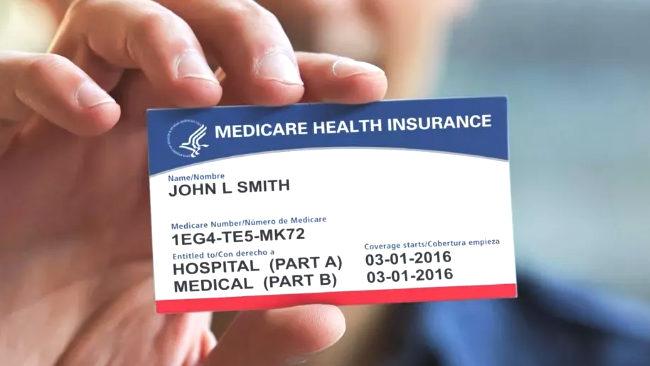Medicare Drug Price Negotiation Program Set to Change Healthcare
More than 8 million Medicare Part D enrollees are set to benefit from the Medicare Drug Price Negotiation Program. The program empowers Medicare to negotiate with drug manufacturers and lower the prices of select medications covered under Medicare Part D.
The initiative by the national healthcare provider seeks to increase access to critical medication by stemming the cost of prescription drugs. By negotiating favorable terms with manufacturers, Medicare aims to secure the best prices for covered medication and pass the cost savings to Medicare Part D enrollees.
The First Tranche of Medicare Part D Drugs
On September 1, 2023, the Centers for Medicare & Medicaid Services (CMS) published a list of the first 10 Medicare Part D drugs selected for negotiation. The list comprises medications with the highest Medicare Part D spending, lack generic equivalent and have been on sale for at least seven years.
The 10 Medicare Part D drugs in the first round of negotiations are prescribed as treatment for various severe medical conditions, including:
- Blood clots – Eliquis and Xarelto
- Heart failure – Entresto and Farxiga
- Psoriasis – Stelara and Enbrel
- Rheumatoid arthritis – Enbrel
- Crohn's disease – Stelara
- Blood cancer – Imbruvica
- Diabetes – Farxiga, Januvia, Fiasp/NovoLog, and Jardiance
Upon successful negotiations, the CMS will publish the maximum fair price for the drugs by September 1, 2024, and the new prices will take effect on January 1, 2026.
Unrestrictive Drug Form and Dosage Coverage
Under the Inflation Reduction Act, Part D enrollees will access any of the 10 selected drugs in any dosage and form that suits their health needs. Currently, Part D plans to restrict the form in which enrollees can access these critical drugs.
For instance, while enrollees can access Xarelto (blood thinner) in tablet form, only 78% are covered for oral suspension. While the 140mg oral capsule of Imbruvica, a cancer drug, is available to all enrollees, only 77% have coverage for the 280mg oral tablet. The Inflation Reduction Act seeks to provide universal coverage and eliminate variations to help patients conveniently get the necessary variations.
Transparent Drug Categorization
Insurance companies offering Part D plans use a formulary placement to categorize covered drugs into four tiers: tier 1, tier 2, tier 3, and tier specialty. All levels have different cost implications for patients. Lower tiers carry lower out-of-pocket costs, while higher tiers require higher co-insurance or copayments.
Under the new law, the CMS will require insurers to justify placing any selected drugs on the higher, expensive tiers. Only six of the chosen drugs (Farxiga, Entresto, Januvia, Jardiance, Eliquis, and Xarelto) are covered in preferred tiers. The formulary placement increases drug accessibility and utilization because they attract an average copayment of $47 monthly.
However, some enrollees aren't so lucky. These drugs are covered under the non-preferred tiers, where they attract a copayment of up to 50%. For instance, enrollees whose plan covers Eliquis (blood thinner) under the non-preferred tiers pay up to $100 in monthly copayments.
The Inflation Reduction Act seeks to have Part D plans shift the most commonly used drugs into the lower tiers to make them more affordable. In January 2023, the IRA instituted a $35 copayment cap for covered insulin products. The move allowed enrollees to access Fiasp/NovoLog (an insulin product) without paying more than $35 in monthly copay, regardless of the tier placement.
Shifting medication to lower or preferred tiers can make them more affordable and accessible to more Part D enrollees while reducing out-of-pocket expenses.
Easing Restrictive Utilization Management
The CMS will closely monitor how Part D plan providers use utilization management tools for the 10 selected drugs. Health insurance companies use these tools to restrict or manage drug prescriptions. For instance, a Part D plan may institute prior authorization and require doctors to secure approvals from the insurer before prescribing a specific drug.
Nearly all Part D enrollees with Enbrel, Stelara, and Imbruvica coverage require prior authorization from their plans before they can get prescriptions. Almost all drugs selected by the CMS had quantity limits. Only 2% of the enrollees had Fiasp/NovoLog restrictions, but nearly all had Januvia and Jardiance restrictions.
CMS will require Plan D service providers to justify any move to impose more restrictive utilization management measures on the 10 selected drugs. Insurers will need to explain the criteria they use to apply more restrictions to these drugs compared to other medications in the same class.
The ultimate goal of the increased scrutiny is to grant patients easier and faster access to critical medication. CMS seeks to eliminate unnecessary delays or hurdles the Part D plans impose. The move would allow patients to access their prescribed medication without enduring too much red tape.
Get the Best Healthcare Coverage
While the best Medicare health insurance plan can help you safeguard your health, choosing the right option can prove challenging. The expert team at Sackett & Associates can guide you through this complicated process and ensure you get the best coverage.
For more information on how to pick the best Medicare Part D plan, contact us today.
Share This Post
Taking The Pain Out Of Health Insurance
We make it simple to find the right insurance plans for your needs
In just a few quick steps.






